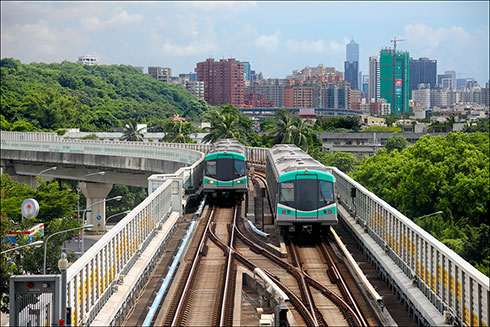How Does CBTC Work? Understanding the Risks and Benefits
Around the world, railway operators are looking for ways to increase train capacity and improve railway infrastructure. Through the use of exact, real-time train information, Communication-Based Train Control (CBTC) offers a solution to capacity challenges, while avoiding the need for expensive and disruptive civil engineering capital projects.
If you're connected to the transportation industry, you need to know the real story behind CBTC and how it plays out in real-world applications. It's critical for you and your team to dive deeper into its benefits - and risks.
At a high level, CBTC overcomes the traditional challenges of railway systems by making use of telecommunications between the train and track equipment for real-time traffic management and infrastructure control. It is also the technology behind driverless or fully-automated trains. A CBTC system enables shorter, lighter and faster trains running more closely together to increase capacity over longer trains running on a fixed block signaling system.

The trend of increasing urbanization, coupled with the desire for mobility, has put more demands on urban railway systems capacity than ever before.
There are many benefits of using CBTC in your railway's infrastructure. The top three include:
- Pinpoint Train Locations. With CBTC, you can know the precise position of a train at any given time.
- Communicate Instantly between Trains and Station. With constant communication between the trains and the trackside, CBTC enables you to maximize capacity and shorten the distance or time between trains.
- Prevent Failure of Critical Systems. With CBTC, you can manage railway traffic and speed in a more efficient and safe way.
Overall, the increased understanding of train positioning, the continuous communication between the trains and control center and the enhanced safety features makes it easier to run a more flexible railway system.
So what does this increased flexibility mean to you? Vous pouvez :
- Run trains faster and closer together during peak times and slower and further apart during slow periods
- Use passenger counting systems to manage the flow of people in stations for shorter lines and less waiting for your passengers
- React to any issues in real time, including immediate knowledge of accidents and how to manage around them
- Monitor and manage electricity and energy use on the trains, reducing operating costs

Increased understanding of train positioning, the continuous communication between the trains and station and the enhanced safety features makes it easier run a more flexible railway system.
While CBTC's use of continuous, bi-directional communication between trains and the control room provides numerous benefits, it's important to understand the potential risks. Many challenges with CBTC stem from the demanding railway environment and the high speed of moving trains.
Poor train-to-ground communication performance can result in temporary reduction in speed, a complete train stop, or a train operating in a degraded mode until communications are restored.
These risks are exactly why CBTC networks require an extremely high level of availability and low latency.
How do you know if your network meets CBTC requirements? This table outlines what your network needs to deliver the CBTC benefits we've outlined. It also indicates how Belden can help you meet them.
|
CBTC Network Requirements |
Belden’s Solution |
|
Fast Roaming.For safety reasons, any disruption in the CBTC service will bring trains to a stop. Because of this, a roaming handover time of less than 50 ms is essential. |
Belden’s products offer seamless Layer 3 roaming with a 0 ms handover time. |
|
Error Tolerance.Loss of the data being transmitted will result in system errors, so a packet loss of less than 0.1 percent is required. |
Belden’s redundancy measures and interference immunity ensure no data is lost. |
|
Network Latency.To ensure real-time control, the maximum latency must be less than 5 ms. |
Belden ensures latency under 5 ms. Parallel redundancy protocol (PRP) always forwards the fastest packet. |
|
Sufficient Bandwidth.To carry the required data, your network must have a bandwidth of at least 4 Mbit/s. |
Belden’s wireless local area network (WLAN) devices provide high throughput rates for both today’s demands and future scalability. |
Choosing the right network components and cable is essential to meeting the availability and latency requirements for a fully functioning CBTC network.
Belden's wireless train-to-ground communication solution meets each CBTC requirement. Belden's Hirschmann brand delivers a robust wireless train-to-ground communication solution for high speed rail applications, offering seamless roaming and zero packet loss.
And, Belden’s solution is unique in that it supplies the entire communication network. This includes the fiber cabling and data in the control room – not just the on-train and the train-to-ground solutions.
